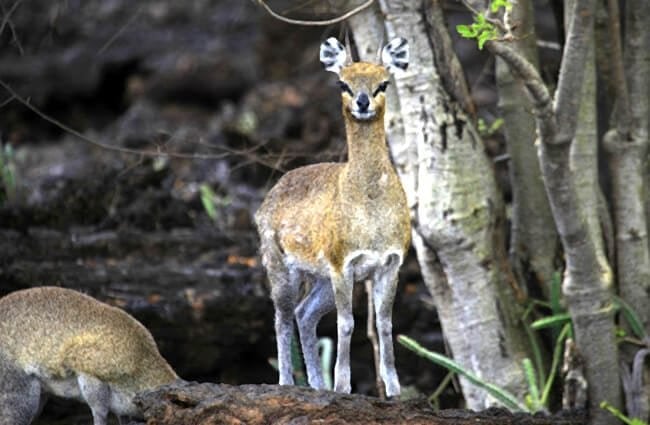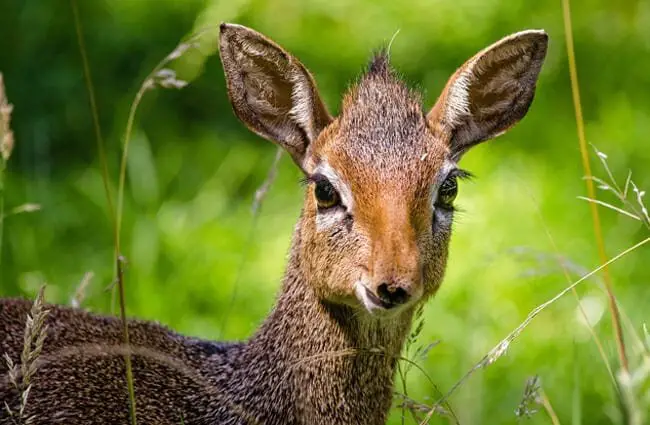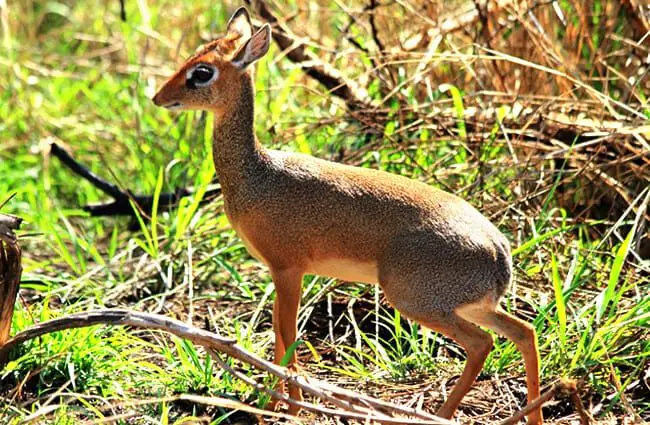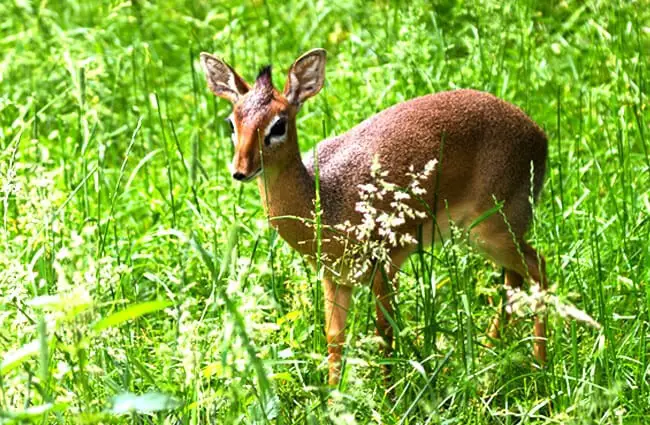The African bush holds many wonders, but few are as charming and unique as the dik‑dik. These diminutive antelopes, known for their extraordinary appearance and peculiar behaviors, are a testament to the incredible diversity of life on the African continent. Often overlooked due to their size, the dik‑dik plays a vital role in its ecosystem and holds a fascinating place in the natural world.

Understanding the Dik-Dik
The name “dik-dik” itself is onomatopoeic, mimicking the whistling sound these antelopes make when alarmed. There are four recognized species of dik‑dik: the Mwanza dik‑dik, Salt’s dik‑dik, Silver dik‑dik, and Hinde’s dik‑dik. Each species exhibits slight variations in size, coloration, and habitat preference, but they all share the characteristic small stature and graceful movements that define the group.
Physical Characteristics
Dik‑dik are among the smallest antelopes in the world, standing just 16 to 20 inches tall at the shoulder and weighing between 7 and 14 pounds. Their coats are typically a reddish‑brown or grayish‑brown color, providing excellent camouflage in the bush. A distinctive feature is the elongated, flexible nose, which they use to browse leaves and shoots. Both males and females possess small, ringed horns, though the horns of the males are slightly larger and more robust. Their long legs and slender build allow them to navigate dense vegetation with ease.
Habitat and Distribution
Dik‑dik are native to eastern and southern Africa, inhabiting a variety of habitats including savannas, woodlands, and shrublands. They prefer areas with dense vegetation for cover and access to water. Salt’s dik‑dik is found in the more arid regions, while the other species are generally found in areas with more rainfall. Their distribution is patchy, dependent on the availability of suitable habitat and resources. They are commonly found in countries such as Kenya, Tanzania, Somalia, Ethiopia, and South Africa.

Diet and Feeding Behavior
Dik‑dik are herbivores, with a diet consisting primarily of leaves, shoots, fruits, and buds. They are selective feeders, choosing nutritious and palatable plants. Their elongated noses allow them to reach high branches and browse vegetation that other herbivores cannot access. They obtain most of their water from the plants they consume, but will drink from pools and streams when available. Dik‑dik are known to regurgitate and re‑chew their food, a process called rumination, which helps them extract more nutrients. They are most active during the early morning and late afternoon, seeking shade during the hottest part of the day.
Social Behavior and Reproduction
Dik‑dik are generally monogamous animals, forming long‑term pair bonds. Pairs maintain a defined territory, which they defend against other dik‑dik. Territories are marked with secretions from scent glands located on the face and feet. While typically solitary outside of the breeding season, pairs will often forage and travel together. Gestation lasts approximately six to seven months, resulting in the birth of a single calf. Calves are precocial, meaning they are relatively well‑developed at birth and can stand and walk shortly after birth. The calf will remain with its parents for several months, learning essential survival skills. Dik‑dik have a relatively long lifespan, with individuals living up to ten years in the wild.

Evolutionary History
Dik‑dik belong to the family Bovidae, which includes cattle, sheep, goats, and other horned mammals. Their lineage traces back to early antelopes that roamed Africa millions of years ago. Over time, these antelopes diversified, adapting to different ecological niches. The dik‑dik, with its unique adaptations for browsing on leaves and navigating dense vegetation, emerged as a distinct species. Fossil evidence suggests that early dik‑dik were larger than modern species, gradually becoming smaller and more specialized over time.
Ecological Role and Interactions
Despite their small size, dik‑dik play an important role in their ecosystem. They help to control vegetation growth, preventing certain plants from becoming dominant. They also serve as prey for predators such as leopards, lions, hyenas, and eagles. Their presence indicates a healthy ecosystem, as they are sensitive to habitat degradation and disturbance. Dik‑dik interact with other herbivores, sharing resources and competing for food. They contribute to seed dispersal through their droppings, helping to maintain plant diversity.

Encountering Dik‑Diks in the Wild
If you are fortunate enough to encounter a dik‑dik in the wild, observe it from a distance and avoid disturbing its natural behavior. Approach slowly and quietly, and never attempt to chase or corner the animal. Remember that dik‑dik are prey animals and easily frightened. If you are hiking in dik‑dik habitat, be aware of your surroundings and watch for signs of their presence, such as tracks and droppings. Avoid making loud noises or sudden movements. Respect their space and allow them to continue foraging and living undisturbed.
Dik‑Diks in Captivity
Dik‑dik are occasionally kept in zoos and wildlife parks. Providing adequate care for dik‑dik in captivity requires careful attention to their specific needs. They need a spacious enclosure with plenty of vegetation for browsing and shelter. Their diet should consist of a variety of fresh leaves, shoots, fruits, and commercially formulated herbivore pellets. It is crucial to provide them with a clean and hygienic environment to prevent disease. Dik‑dik are social animals and should be housed in pairs or small groups to promote their well‑being. Regular veterinary checkups and preventative healthcare are essential. Enrichment activities, such as providing novel objects and opportunities for foraging, can help to stimulate their minds and keep them active.

Cultural Significance
In some African cultures, the dik‑dik holds symbolic meaning. Certain tribes view the dik‑dik as a symbol of grace, agility, and beauty. Its image may be incorporated into artwork, storytelling, and traditional ceremonies. Some communities also believe that the dik‑dik possesses medicinal properties and use parts of the animal in traditional remedies. However, it is important to approach the use of animals for medicinal purposes with caution and respect for ethical considerations and conservation efforts.

The dik‑dik, though small in stature, is a remarkable animal that embodies the wonders of the African wilderness. Its unique adaptations, captivating behavior, and ecological importance make it a truly special creature. By understanding and appreciating the dik‑dik, we can contribute to its conservation and ensure that it continues to thrive in its natural habitat for generations to come.

![Red Angus Closeup of a beautiful Red Angus cowPhoto by: U.S. Department of Agriculture [pubic domain]https://creativecommons.org/licenses/by/2.0/](https://animals.net/wp-content/uploads/2020/03/Red-Angus-4-238x178.jpg)




![Red Angus Closeup of a beautiful Red Angus cowPhoto by: U.S. Department of Agriculture [pubic domain]https://creativecommons.org/licenses/by/2.0/](https://animals.net/wp-content/uploads/2020/03/Red-Angus-4-100x75.jpg)

